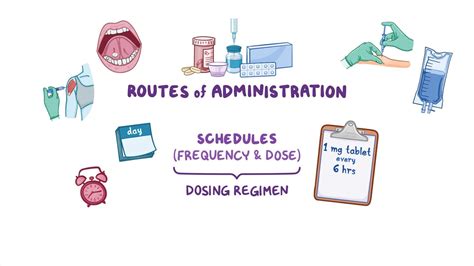Intro
Discover Enoxaparin Sodium Injection uses, a low molecular weight heparin for preventing deep vein thrombosis, pulmonary embolism, and stroke in atrial fibrillation patients, with benefits including anticoagulation and thromboprophylaxis.
Enoxaparin sodium injection is a crucial medication in the field of cardiovascular health, playing a significant role in preventing and treating blood clotting conditions. Its importance cannot be overstated, given the prevalence and potential severity of thromboembolic disorders. The ability of enoxaparin sodium to act as an anticoagulant makes it a vital tool in medical practice, particularly in the prevention of deep vein thrombosis (DVT) and pulmonary embolism (PE), which are serious conditions that can lead to significant morbidity and mortality. Understanding the uses, mechanisms, and administration of enoxaparin sodium is essential for healthcare professionals and patients alike, as it empowers them to make informed decisions about its use.
The significance of enoxaparin sodium injection extends beyond its clinical applications, as it also represents a significant advancement in the management of thrombotic disorders. Historically, the treatment and prevention of blood clots have been challenging, with earlier anticoagulants having limitations in terms of efficacy, safety, and convenience. Enoxaparin, being a low molecular weight heparin (LMWH), offers several advantages over traditional anticoagulants, including a more predictable dose-response relationship, reduced risk of major bleeding, and the convenience of subcutaneous administration. These factors have contributed to its widespread adoption in clinical practice.
The administration and dosing of enoxaparin sodium injection are critical aspects of its use, as they directly impact its efficacy and safety. The medication is typically administered subcutaneously, once or twice daily, depending on the specific indication and patient factors. For instance, in the prevention of DVT, which may occur in hospitalized patients, especially those undergoing major surgery, enoxaparin is often administered at a fixed dose. In contrast, for the treatment of acute DVT or PE, the dosing may be adjusted based on the patient's weight and renal function. Understanding these nuances is essential for optimizing outcomes and minimizing risks associated with enoxaparin therapy.
Introduction to Enoxaparin Sodium

Enoxaparin sodium is a synthetic anticoagulant that belongs to the class of low molecular weight heparins. It works by enhancing the inhibition of Factor Xa and thrombin by antithrombin III, thereby preventing the formation of blood clots. This mechanism of action underlies its effectiveness in preventing and treating thromboembolic disorders. The drug's pharmacokinetic profile, characterized by a high bioavailability after subcutaneous injection and a predictable dose-response relationship, contributes to its clinical utility.
Pharmacokinetics and Pharmacodynamics
The pharmacokinetics of enoxaparin sodium involve its absorption, distribution, metabolism, and excretion. After subcutaneous administration, enoxaparin is absorbed rapidly, with peak plasma levels achieved within 3 to 4 hours. It is primarily distributed in the blood and, to a lesser extent, in tissues. The drug undergoes renal excretion, with its elimination half-life being approximately 4 to 6 hours in patients with normal renal function. This pharmacokinetic profile supports its once- or twice-daily dosing regimen.Clinical Applications

Enoxaparin sodium injection has several clinical applications, including the prevention and treatment of deep vein thrombosis (DVT) and pulmonary embolism (PE), which are manifestations of venous thromboembolism (VTE). It is also used in the prevention of ischemic complications in patients with unstable angina or non-ST-segment elevation acute coronary syndrome (ACS). In patients undergoing major surgery, such as hip or knee replacement, abdominal surgery, or cancer surgery, enoxaparin is often used to prevent postoperative DVT and PE.
Prevention of Deep Vein Thrombosis
The prevention of DVT is a critical application of enoxaparin sodium, especially in hospitalized patients who are at increased risk due to immobilization, surgery, or underlying medical conditions. Enoxaparin's efficacy in this setting has been demonstrated in numerous clinical trials, which have shown a significant reduction in the incidence of DVT and PE compared to placebo or other forms of prophylaxis.Administration and Dosing

The administration and dosing of enoxaparin sodium are tailored to the specific clinical indication and patient characteristics. For the prevention of DVT in medical patients, a fixed dose is often used, whereas for surgical patients, the dose may be adjusted based on the type of surgery and the patient's risk factors for VTE. In the treatment of acute DVT or PE, the dosing is typically weight-based, with adjustments made for renal impairment.
Dosing Adjustments
Dosing adjustments are crucial to optimize the efficacy and safety of enoxaparin sodium. In patients with renal impairment, the dose may need to be reduced to avoid accumulation of the drug and increase the risk of bleeding. Similarly, in obese patients, the dose may be adjusted based on the patient's weight to ensure adequate anticoagulation.Safety and Efficacy

The safety and efficacy of enoxaparin sodium have been extensively evaluated in clinical trials. The drug has been shown to be effective in preventing and treating VTE, with a favorable safety profile compared to other anticoagulants. However, like all anticoagulants, enoxaparin carries a risk of bleeding, which can be major or minor. The risk of bleeding can be minimized by careful patient selection, appropriate dosing, and regular monitoring.
Bleeding Risk
The bleeding risk associated with enoxaparin sodium is a critical consideration in its use. Patients at higher risk of bleeding include those with renal impairment, liver disease, or a history of bleeding disorders. In such patients, the benefits and risks of enoxaparin therapy must be carefully weighed, and alternative anticoagulation strategies may be considered.Monitoring and Management

Monitoring and management of patients on enoxaparin sodium therapy are essential to ensure its safe and effective use. This includes regular assessment of renal function, monitoring for signs and symptoms of bleeding, and adjusting the dose as necessary. In patients with a high risk of bleeding, more frequent monitoring may be required.
Reversal of Anticoagulation
In cases where reversal of anticoagulation is necessary, such as in patients who experience major bleeding, the management strategy will depend on the severity of the bleeding and the patient's clinical status. Protamine sulfate can be used to reverse the anticoagulant effect of enoxaparin, although its use is not always effective and may be associated with adverse reactions.Conclusion and Future Perspectives

In conclusion, enoxaparin sodium injection is a valuable medication in the prevention and treatment of thromboembolic disorders. Its efficacy, safety, and convenience have made it a preferred choice for many clinicians. However, its use requires careful consideration of patient factors, dosing, and monitoring to minimize risks and optimize outcomes. As the field of anticoagulation therapy continues to evolve, the role of enoxaparin sodium is likely to remain significant, with ongoing research aimed at improving its use and developing new anticoagulants with enhanced profiles.
Final Thoughts
Enoxaparin sodium injection represents a significant advancement in the management of thrombotic disorders, offering a balance of efficacy and safety that has improved patient outcomes. As healthcare professionals and patients navigate the complexities of anticoagulation therapy, understanding the uses, mechanisms, and management of enoxaparin sodium is crucial. By doing so, we can harness the full potential of this medication to prevent and treat thromboembolic disorders, ultimately improving the quality of life for those affected by these conditions.What is the primary use of enoxaparin sodium injection?
+Enoxaparin sodium injection is primarily used for the prevention and treatment of deep vein thrombosis (DVT) and pulmonary embolism (PE), which are manifestations of venous thromboembolism (VTE).
How is enoxaparin sodium administered?
+Enoxaparin sodium is administered subcutaneously, once or twice daily, depending on the specific indication and patient factors.
What are the potential risks associated with enoxaparin sodium therapy?
+The primary risk associated with enoxaparin sodium therapy is bleeding, which can range from minor to major. Patients with renal impairment, liver disease, or a history of bleeding disorders are at higher risk.
We invite you to share your thoughts and experiences with enoxaparin sodium injection in the comments below. Your insights can help others better understand the uses, benefits, and management of this medication. Additionally, if you found this article informative, please consider sharing it with others who may benefit from this information. Together, we can promote awareness and improve outcomes for patients with thromboembolic disorders.
